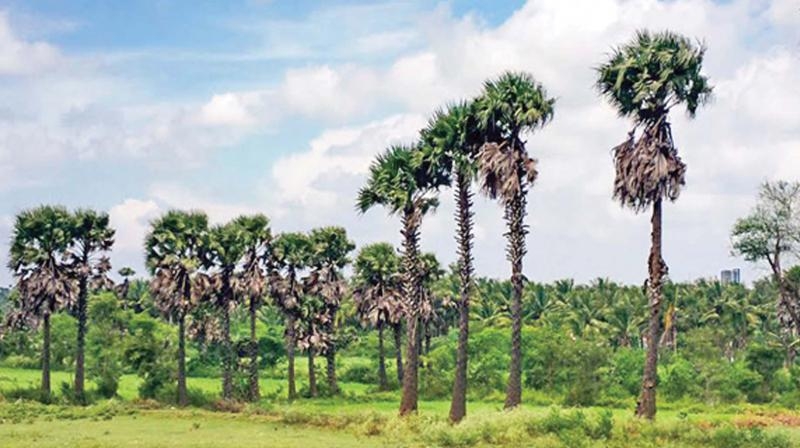Palmyra trees to be a saviour for Tamil Nadu islets
Palmyra trees to be a saviour for Tamil Nadu islets

Seeds of palmyra plant - the ‘karpaga tharu’ of Tamil Nadu, were hence sown into the saline marshes of islets in Gulf of Mannar - in an attempt to strengthen this region against any further erosion, and hence to prevent these islands from all-out submersion.
With man-made factors and climatic changes over the past 5 decades bringing life to changes in morphology and geomorphology of this region, 2 of these islands - Vilanguchalli and Poovarasanpatti - have submerged under water.
15 more of them are to face the same fate, as they too were reduced in size over the years. The islands here are also getting elongating their shape, and expanding on windward side, and shifting from their original core towards the land.
When the researchers were taking efforts to find ways prevent these changes, forest officials came up with the idea of planting palmyrah trees - which can stand strong against gales and cyclones, and have a long life - as a plausible solution for the islands’ troubles.
Dr JK Patterson Edward, director of Suganthi Devadason Marine Research Institute, says that palmyrahs are essential, as they can prevent soil erosion. Patterson led the deployment of an artificial reef earlier, in Vaan island - to prevent it from drowning.
Raghuvaran says, they have now planted almost 7,000 palmyrah seeds in 6 islands under his range. They did not have any special funds for the planting drive but they took it as a task to protect the islands. Palmyrah seeds were preferred, as they withstand strong winds and grow in saline waters, too. The seeds have germinated in all islands, despite destruction due to rodent menace, which was later taken care of.
The Wildlife Warden and District Forest Officer Abishek Tomar looks at these efforts as being part of a 2-pronged approach in order to protect these islands - the scientific one which includes its restoration, along with a goal to increase tree cover. Even though it might take years for these palmyrahs to yield, it is on this very yield that they are pouring in their hopes to make the difference.
The islands of Vilanguchalli and Poovarasanpatti, which covered an area of 2.81 hectares and 4.69 hectares respectively in the year 1969, are now submerged. The SDMRI researchers headed by Dr N Gladwin Gnana Asir, say that in the past 49 years, 5 islands - including Vaan, Koswari, Kariyachalli, Upputhanni, and Valai had lost more than 50% of their area.
According to Dr Gladwin, excluding the excessive coral mining, dynamite fishing, and bottom trawling, scientists have said that natural processes like storms, tsunami, neo-tectonic activity, and sea-level rise too, could have influenced the morphology of these islands.
Increasing tree cover here could also encourage more nesting and roosting of various birds, which will further increase vegetation in these islands.
